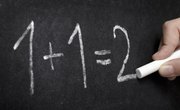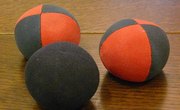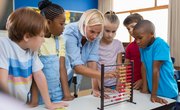The guided discovery approach is one that is fundamentally linked with the constructivist school of education theory. If you do not want to introduce a brand new methodology to your classroom, you can incorporate elements of the guided discovery approach to your teaching, allowing children to find the answers themselves. This is a way of engaging your students and preventing math from becoming just a series of lectures and numbers, from which they are disengaged.
Start each lesson by giving the children a problem. This will be something simple that they will be able to solve by the end of the class. For example, tell them that they are hosting a party with nine guests. There are three pizzas. How should they divide the pizzas up so that every guest gets a fair amount? This will force the students to engage with a concrete problem.
Divide the children up into small groups. Give the children three circles of paper and a pencil. Tell them that they have to divide the pizzas up so that everyone has a fair amount. Give them time to be able to work this out. If you are not doing the pizza problem, you can give them small blocks or coins to work out whatever problem you have set them.
Ask the children to explain their solutions to you. While some will have found the answer, others will have been more creative. When all the students have given you their answers, you can explain the "correct" way, which is the way that the syllabus explains should be used to solve the problem. Explain why it is so and answer any questions the students may have.
Give the children a new problem based on the same techniques. For the pizza problem tell them they have to divide two pizzas into five, or something else slightly more complex. Work it through as a class, letting the students lead the reasoning, stepping in only when needed.
Allow the students to find the solution. By doing this, they will be engaging fully with the problems and learning to solve it themselves.
Related Articles
References
Writer Bio
Emile Heskey has been a professional writer since 2008, when he began writing for "The Journal" student newspaper. He holds a Bachelor of Arts in modern history and politics from Oxford University, as well as a Master of Science in Islamic and Middle Eastern studies from Edinburgh University.











